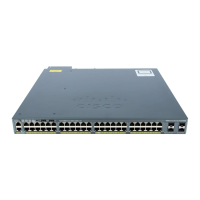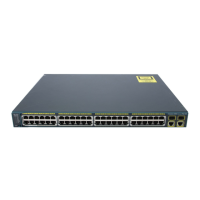CHAPTER 2
Configuring Spanning Tree Protocol
•
Finding Feature Information, page 13
•
Restrictions for STP, page 13
•
Information About Spanning Tree Protocol, page 14
•
How to Configure Spanning-Tree Features, page 26
•
Monitoring Spanning-Tree Status, page 38
•
Additional References for Spanning-Tree Protocol, page 39
•
Feature Information for STP, page 40
Finding Feature Information
Your software release may not support all the features documented in this module. For the latest feature
information and caveats, see the release notes for your platform and software release.
Use Cisco Feature Navigator to find information about platform support and Cisco software image support.
To access Cisco Feature Navigator, go to http://www.cisco.com/go/cfn. An account on Cisco.com is not
required.
Restrictions for STP
•
An attempt to configure a switch as the root switch fails if the value necessary to be the root switch is
less than 1.
•
If your network consists of switches that support and do not support the extended system ID, it is unlikely
that the switch with the extended system ID support will become the root switch. The extended system
ID increases the switch priority value every time the VLAN number is greater than the priority of the
connected switches running older software.
•
The root switch for each spanning-tree instance should be a backbone or distribution switch. Do not
configure an access switch as the spanning-tree primary root.
Catalyst 2960-XR Switch Layer 2 Configuration Guide, Cisco IOS Release 15.0(2)EX1
OL-29424-01 13

